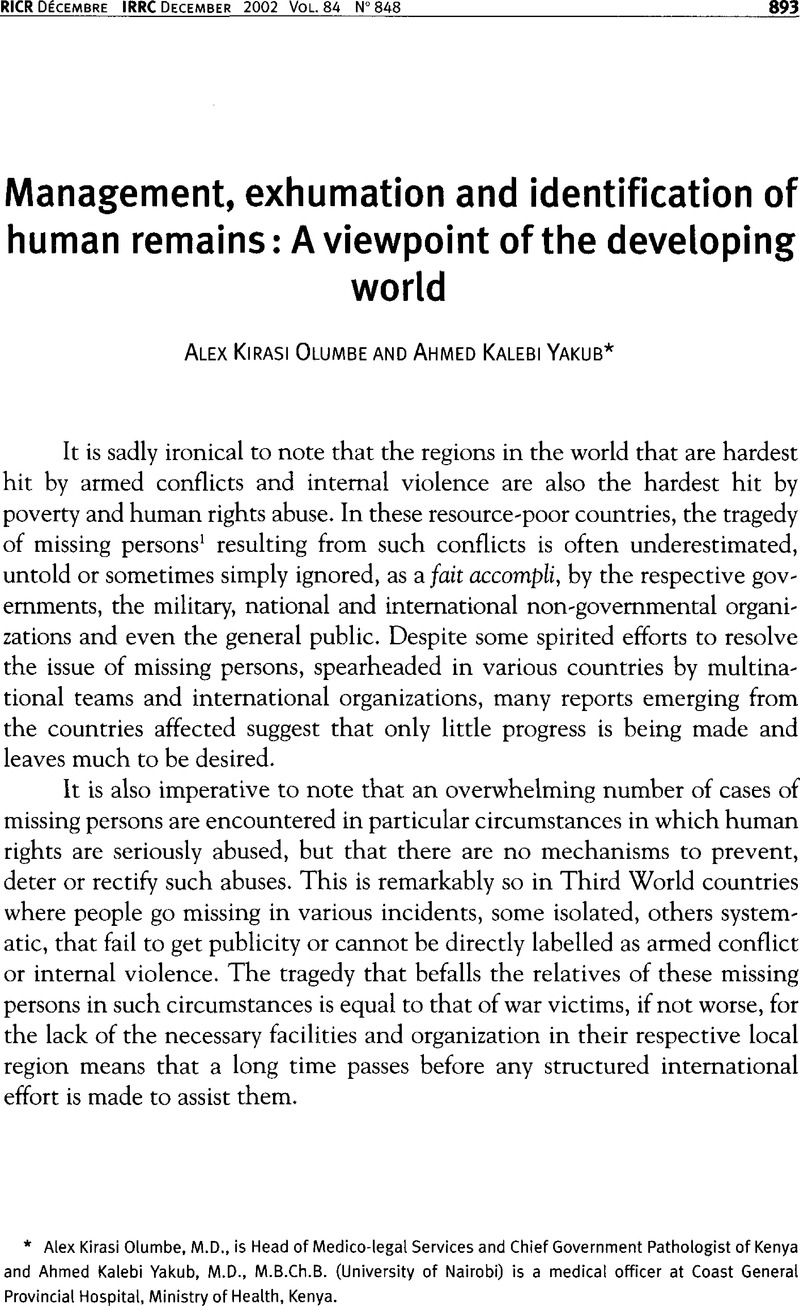Published online by Cambridge University Press: 19 April 2010

1 “Missing persons” in the context of this article refers to persons whose whereabouts are unknown by relatives and who consequently have been presumed dead, and those who are known to have died but whose remains have not been recovered or positively identified.
2 Dada, M.A. and McQuoid-Mason, D.J. DJ, Introduction to Medico-legal Practice, Butterworths, Durban, 2001, pp. 341–343.Google Scholar
3 Lorente, J. A. et al. “Identification of missing persons: The Spanish ‘Phoenix’ program”, Croatian Medical Journal, Vol. 42, 2001, pp. 267–270.Google ScholarPubMed
4 Corach, D. et al. “Additional approaches to DNA typing of skeletal remains: The search for ‘missing’ persons killed during the last dictatorship in Argentina”, Electrophoresis, Vol. 18, 1997, pp. 1608–1612.CrossRefGoogle ScholarPubMed
5 Huffine, E. et al. “Mass identification of persons missing from the breakup of the former Yugoslavia: Structure, function, and role of the International Commission on Missing Persons”, Croatian Medical Journal, Vol. 42, 2001, pp. 271–275.Google Scholar
6 Report on the 1980s Disturbances in Matabeleland and the Midlands, Catholic Commission for Justice and Peace in Zimbabwe, 03 1997.Google Scholar
7 “Human rights and forensic science”, United Nations Commission of Human Rights Resolution 2000/32.
8 “Gone forever: they are lost without a trace”, “The Big Issue”, reported in the East African Standard Kenyan Daily Newspaper, 27 09 1999 to 11 10 1999Google Scholar; “Where are you?”, Wednesday Magazine, appearing in the Daily Nation Newspaper, 26 08 1998.Google Scholar
9 Olumbe, A. K., “A report of medico-legal autopsy cases performed in Nairobi 1997–1999”Google Scholar. paper presented to the 2001 INPALMS congress meeting in Melbourne, Australia.
10 Olumbe, A. K., “The Nairobi US Embassy Bombing 1998: Interdisciplinary collaboration and cooperation in investigation of mass fatalities”Google Scholar, paper presented to the 2001 INPALMS congress meeting in Melbourne Australia.